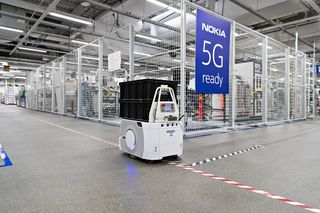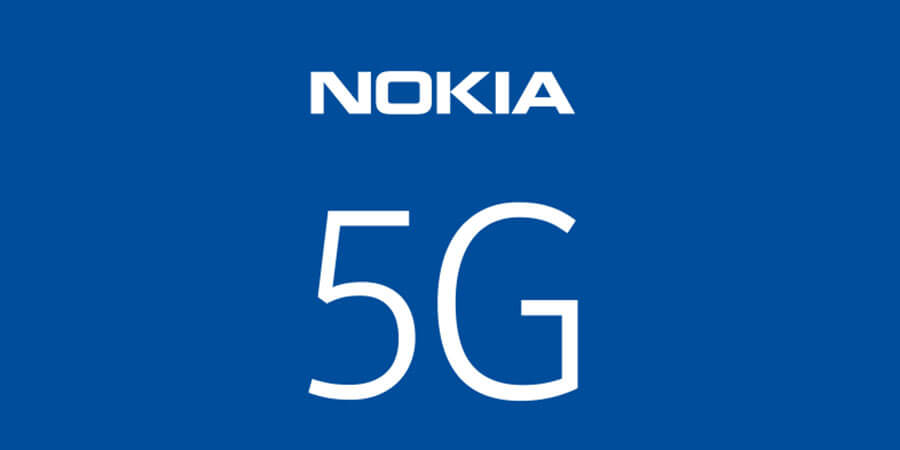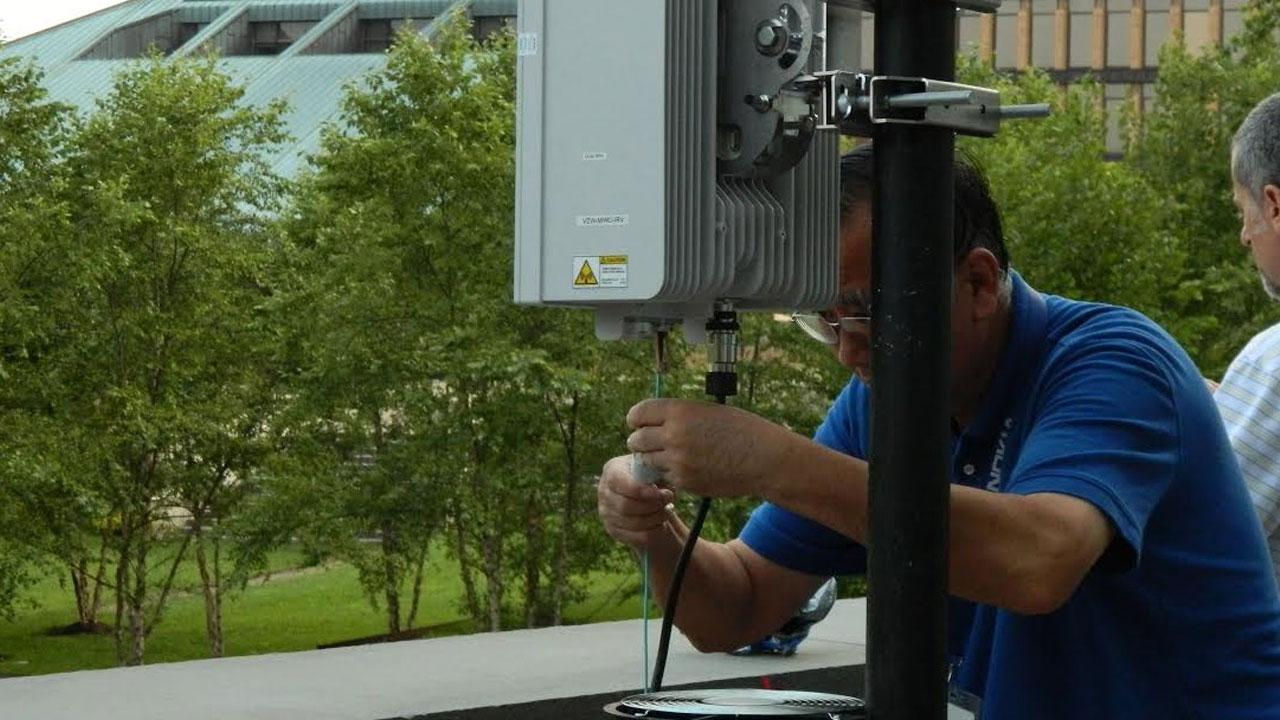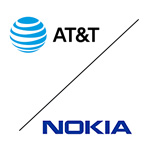Nokia
Analysis: Nokia and Marvell partnership to develop 5G RAN silicon technology + other Nokia moves
Nokia has teamed up with semiconductor company Marvell Technology Group Ltd to develop customized 5G radio access system-on-chip leveraging its ReefShark technology. The alliance underscores Nokia’s commitment to deliver cost-effective and automated 5G network operations, especially at a time when it is aiming to walk the extra mile to revive its faltering 5G business.
As part of the agreement, Marvell Technology’s multi-core Radio Access Technology applications will be incorporated in Nokia’s AirScale RAN product line with its 5G-backed ReefShark portfolio. Equipped with customized ARM-architecture-based processor chips, this potential breakthrough innovation aims to deliver a best-in-class customer experience with reduced power consumption and enhanced performance and capacity.
…………………………………………………………………………………………………………………………………………………………………………………………………………………………………………..
Tommi Uitto, President of Mobile Networks at Nokia, said:
“This important announcement highlights our continued commitment to expanding the variety and utilization of ReefShark chipsets in our portfolio. This ensures that our 5G solutions are equipped to deliver best-in-class performance to our customers. As service providers continue to evolve their 5G plans and support growing traffic and new vertical services, the infrastructure and components must evolve rapidly. Adopting the latest advancements in silicon technology is a critical step to better serve our customers’ needs.”
“5G networks need to support billions of devices and machines, and this massive increase in volume and scale means that existing infrastructure and components must evolve rapidly, adopting technologies and techniques to enable to deploy 5G networks quickly, added Uitto.”

(Image credit: Nokia)
………………………………………………………………………………………………………………………….
Other Nokia Initiatives:
- Nokia also agreed to a partnership with Intel on programs to accelerate its 5G development. Intel’s new Atom chip is targeted at base stations. Nokia will ship Intel Atom-powered variants of its 5G AirScale radio access technology. The company will also use Intel’s second generation Xeon scalable processor in its AirFrame data center kit, allowing for common architecture from the cloud to the edge of 5G networks.
- Nokia said it needed several partnerships to enable it support and achieve its goals for 5G.
- Nokia will acquire optical networking technology provider Elenion. Nokia said that adding Elenion will broaden its addressable market and unlock some cost benefits.
- Nokia took a $561 million R&D loan which was signed with the European Investment Bank (EIB) in August 2018, but was only disbursed last month. The loan has an average maturity of about five years after disbursement according to Reuters. A Nokia representative said the company would use the loan to further accelerate its research and development of 5G technology
……………………………………………………………………………………………………………………………………………………………………………
Analysis by Zacks Equity Research:
Nokia has long struggled to undertake additional investments related to its 5G powered ReefShark SoCs. These SoCs are best known to leverage a single computer chip to operate an entire system. Unfortunately, its inability to develop ReefShark portfolio has hindered its cost-efficiency feature, compromising its profitability to rivals like Ericsson ERIC, which spends hefty amounts on R&D. Dearth of resources and geared up 5G spending cycle have also put Nokia at the risk of losing out on upcoming commercial launches.
The latest collaboration comes as a savior for the Finnish company to cater new vertical markets especially in the face of burgeoning network traffic and dynamic 5G plans. Dubbed as a key partnership, it is expected to reduce Nokia’s technical disparities and address the complex requirements of 5G NSA, SA, NR specifications for future 5G network deployments.
Nokia’s gross margin was negatively impacted by a high cost level associated with its first generation 5G products, product mix and profitability challenges in China. Despite a 4.2% rise in revenues in third-quarter 2019, the performance was marred by pricing pressure in early 5G deals and temporary capital expenditure constraints in North America related to the proposed merger of T-Mobile US and Sprint. This was followed by its decision to suspend dividend payments and slash guidance for 2020. The company has also decided to retrench about 180 employees in order to trim operating costs.
It remains to be seen whether Nokia will be able to script a turnaround amid a challenging macroeconomic environment and geopolitical uncertainties.
……………………………………………………………………………………………………………………………………………………………………………
About Marvell:
Marvell first revolutionized the digital storage industry by moving information at speeds never thought possible. Today, that same breakthrough innovation remains at the heart of the company’s storage, processing, networking, security and connectivity solutions. With leading intellectual property and deep system-level knowledge, Marvell’s infrastructure semiconductor solutions continue to transform the enterprise, cloud, automotive, industrial, and consumer markets. To learn more, visit: https://www.marvell.com/
About Nokia:
We create the technology to connect the world. Only Nokia offers a comprehensive portfolio of network equipment, software, services and licensing opportunities across the globe. With our commitment to innovation, driven by the award-winning Nokia Bell Labs, we are a leader in the development and deployment of 5G networks.
Our communications service provider customers support more than 6.1 billion subscriptions with our radio networks, and our enterprise customers have deployed over 1,000 industrial networks worldwide. Adhering to the highest ethical standards, we transform how people live, work and communicate. For our latest updates, please visit us online www.nokia.com and follow us on Twitter @nokia.
Media Inquiries:
Nokia Communications
Phone: +358 10 448 4900
Email: [email protected]
Marvell Communications
Phone: +1 408 222 8966
Email: [email protected]
……………………………………………………………………………………………………………………………………………………………………………
References:
https://www.zacks.com/stock/news/797965/can-nokia-revive-its-5g-business-with-marvell-partnership
https://www.techradar.com/news/nokia-secures-5g-chip-partnerships-with-intel-and-marvell
Nokia claims to have 63 signed 5G contracts
Nokia has reached 63 commercial 5G contracts worldwide, positioning it as a global leader in the delivery of end-to-end 5G solutions. The 5G customer list includes AT&T, KDDI, Korea Telecom, LG Uplus, NTT Docomo, O2, SK Telecom, SoftBank, Sprint, STC, T-Mobile US, Verizon, Vodafone Italy and Zain Saudi Arabia. Nokia said it expects to add “many more new deals” this year. The 63 signed commercial contracts exclude any other type of 5G agreements, such as paid network trials, pilots or demonstrations. If such agreements were to be included, the total number of 5G agreements would reach over 100, Nokia said. The group counts more than 350 customers for 4G-LTE.
The company noted that its equipment has been selected by many of the early 5G adopters. It’s working with all four nationwide operators in the US, all three operators in South Korea and all three nationwide operators in Japan. The early start should provide it with extra expertise to assist the next wave of operators launching 5G.
“This milestone highlights the quality and customer confidence in our 5G portfolio and we expect this to continue this year with the addition of many more new deals,” said Tommi Uitto, President of Mobile Networks at Nokia. “Our global end-to-end portfolio includes products and services for every part of a network, which are helping network operators to enable key 5G capabilities such as network slicing, distributed cloud and the industrial Internet of Things. We are delighted that our technologies are helping to shape the delivery and deployment of 5G technologies worldwide and the myriad benefits these will bring to businesses and consumers alike.”
The 63 signed commercial contracts exclude any other type of 5G agreements, such as paid network trials, pilots or demonstrations. If such agreements were to be included, the total number of 5G agreements would reach over 100. Nokia is also a vendor of choice for almost all of the leading early adopter 5G markets.
“Nokia is the only network supplier whose 5G technology has been contracted by all four nationwide operators in the US, all three operators in South Korea and all three nationwide operators in Japan”, Uitto said. “We have more than 350 customers in 4G, but these first 63 customers represent some two thirds of our global Radio Access Networks business in a typical year. Further, these 63 contracts – across the most important pioneering markets, across low bands, middle bands and high bands, and across traditional and cloud network architectures – provide us with invaluable early experiences and insights for the benefit of the rest of the world. So, it is a great start”, he continued.

Nokia claims to be the only vendor with a globally available end-to-end product portfolio that covers all 5G network elements, including radio, core, cloud and transport as well as management, automation and security. This offers operators and enterprise customers with a simple and efficient step-wise upgrade to existing radio access, core and transport domains which helps customers to a faster path to 5G. Approximately 60% of Nokia’s 5G customers select more than just New Radio from its end-to-end portfolio.
Nokia also declared more than 2 000 5G patent families as essential for 5G, a year after making its first declarations for the 3GPP Release 15 specification. Nokia continues to contribute to 3GPP Release 16 as well as participate in ITU-R WP 5D where IMT 2020 radio aspects are being standardized.
…………………………………………………………………………………………………………………………………………………………………………………………………………………………………
About Nokia
We create the technology to connect the world. We develop and deliver the industry’s only end-to-end portfolio of network equipment, software, services and licensing that is available globally. Our customers include communications service providers whose combined networks support 6.1 billion subscriptions, as well as enterprises in the private and public sector that use our network portfolio to increase productivity and enrich lives.
Through our research teams, including the world-renowned Nokia Bell Labs, we are leading the world to adopt end-to-end 5G networks that are faster, more secure and capable of revolutionizing lives, economies and societies. Nokia adheres to the highest ethical business standards as we create technology with social purpose, quality and integrity. www.nokia.com
Media Inquiries:
Nokia Communications
Phone: +358 10 448 4900
Email: [email protected]
References:
Nokia successful field trial of single-carrier, 50.8 terabit-per-second on Etisalat’s WDM fiber optic network
Nokia and Etisalat (UAE) report the completion of a multi-terabit-per-second, single-carrier data transmission over an operator-deployed fiber network in a field trial. Nokia said in a press release that a terabit-per-second is enough bandwidth to download the entire “Game of Thrones” video series in HD in under two seconds.
Using Etisalat’s wavelength division multiplexing network, the companies were able to reach a transmission speed of 50.8 terabits per second over 93 kilometers of optical fiber.
Nokia said the trial successfully transmitted a record 50.8 terabits per second using multiple wavelengths, each with a net information rate of 1.3 terabits per second, over a 93-kilometer fiber route of Etisalat’s wavelength division multiplexing (WDM) network.
The Nokia field trial showed that Etisalat’s existing network could support the higher optical wavelength bit rates that will be required to support high-bandwidth services such as 5G extreme mobile broadband, fiber-to-the-home (FTTH) and data center interconnect (DCI) cloud services.
Here are the key points:
- Trial is the world’s first terabit-per-second, single-carrier data transmission over an operator deployed fiber network.
- New transmission capacity record comes as Etisalat invests in core network infrastructure in anticipation of a new generation of high-bandwidth services.
- Results move Nokia Bell Labs’ experimental lab records of terabit-per-second single-carrier transmission to a deployed operator network.
In addition to the speeds, higher bit rates per wavelength enable power and space savings, improved network simplicity, as well as increased spectral efficiency and capacity. It also enables reduced cost per bit compared to optical networks composed of lower rate channels, according to Nokia.
Using a single optical carrier operating at 100 Gigabaud, the terabit wavelengths tapped into Nokia Bell Labs’ probabilistic constellation shaping (PCS) to intelligently shape the signal to achieve maximum capacity for the specific fiber route. Nokia said its Photonic Service Engine 3 was the first coherent digital signal processor to implement PCS.
Esmaeel Alhammadi, Senior Vice President, Network Development at Etisalat, said:
“We are pleased to have partnered with Nokia Bell Labs to demonstrate that our optical network is capable of transporting a terabit per second over a single wavelength, and a total per-fibre capacity of over 50 terabits-per-second. Increasing network capacity helps us to provide bandwidth-hungry services such as 5G extreme mobile broadband, fibre-to-the-home and DCI for enterprises.”
Sam Bucci, Head of Optical Networking at Nokia, said:
“The introduction of 5G will require a network that can support dramatic increases in bandwidth in a dynamic fashion. This ground-breaking trial with Etisalat is testimony to Nokia’s commitment to continue to invest in coherent and optical component technologies required to meet the 5G networking challenge at the lowest total cost of ownership for our customers.”
Nokia has a long history of advancing the frontiers of optical transmission. It was the first to demonstrate single-carrier 100G transmission in a deployed production network in 2007, and the first to commercialize single-carrier 100G and 200G wavelengths in 2010 and 2013, respectively. More recently, the Nokia Bell Labs optical research team published the world’s first terabit-per-second transmission lab trials in 2015 and 2017. By extending these records to a deployed operator network, Nokia Bell Labs is bringing the age of terabit wavelength networks a big step closer to reality.
Details of the Nokia trial with Etisalat were published in a post-deadline co-authored paper at the European Conference on Optical Communication (ECOC), held last week in Dublin, Ireland:
1.3-tb/s Single-Channel and 50.8-tb/s WDM Transmission Over Field-Deployed Fiber
Authors: Fred Buchali 1, Karsten Schuh 1, Roman Dischler 1, Mathieu Chagnon 1, Vahid Aref 1, Henning Buelow 1, Qian Hu 1, Florian Pulka 1, Massimo Frascolla 2, Esmaeel Alhammadi 3, Adel Samhan 3, Islam Younis 4, Mohamed El-Zonkoli 4, Peter Winzer 1
Affiliations: Nokia Bell Labs 1, Nokia 2, Etisalat UAR 3, Nokia UAR 4
- TIM PSE-3 trial: Nokia and TIM break European record for long-distance data transmission over high-speed network – laying groundwork for 5G
- Netia PSE-3 trial: Nokia and Netia conduct first field trial of Photonic Service Engine 3 super coherent technology over live production network
- M-net PSE_3 trial: Nokia and M-net conduct first field trial of probabilistically shaped wavelengths using Nokia Photonic Service Engine 3 super coherent technology
- PSE-3 press release: Nokia pushes optical network capacity to theoretical limits with Photonic Service Engine 3 chipset; massive scale and radical simplicity for video, cloud and 5G growth
- PSE-3 Bell Labs video: “What Limits Us, Inspires Us”
Nokia Deploys 1st Liquid Cooled Base Station in Helsinki, Finland
Nokia, Elisa and Efore have commercially deployed has announced a proof of concept (PoC) deployment of a liquid cooled base station system in an apartment building in Helsinki, Finland. The Nokia designed PoC liquid cooled base station was done in collaboration with network operator Elisa and power systems supplier Efore.
Nokia Bell Labs developed the base station, while Efore developed the liquid-cooled power system and Elisa handled deployment.
Analysis from Finland’s VTT Technical Research Centre indicates that the deployment reduced CO2 emissions by up to 80% and energy operating expenses by up to 30%.
Minna Kröger, Director, Corporate responsibility from Elisa, said: “We have set science-based targets to reduce our emissions in our effort to become an environmental leader, and we are committed to providing customers the services that enable them to act in a sustainable way. We are excited to leverage the extensive expertise of Nokia and Nokia Bell Labs for this important deployment.”
“Nokia and Nokia Bell Labs have conducted extensive research and testing to explore the possibilities of using a liquid-cooled base station in an operator’s network,” said Pekka Sunström, head of the Elisa customer team at Nokia.
“This first commercial deployment will enable us to understand the real-world benefits for customers such as Elisa as they transition toward 5G, and how the system can be implemented on a wider scale to help reduce the environmental impact of information and communications technology,” he added.
Vlad Grigore, Chief Technology Officer of Efore, said: “We are dedicated to providing efficient and reliable power supply solutions tailored to our customer’s needs. The power system pilot with MHE (Modular High Efficiency) rectifiers adapted for liquid cooling helps reduce energy consumption and emissions, with a positive impact on environment. We are enthusiastic about this development that continues our long tradition of close cooperation with Nokia.”
Additional Information:
Reference:
Verizon & Nokia demo “5G NR” transmission on a “commercial network”
Verizon and Nokia have completed the first over-the-air, end-to-end “5G NR” data transmission on a commercial 3GPP 5G New Radio (NR) network, the companies announced. The transmission was between commercially deployed Nokia radio equipment and Verizon’s 5G network core and millimeter wave spectrum to a Nokia test van parked in the downtown area of Washington, D.C.
…………………………………………………………………………………………………………………………………………………………………………………………………………………………………………………………………..
Editor’s Note:
“5G NR” is based on 3GPP release 15 spec, whereas it’s 3GPP release 16 (with parts of release 15) which will be submitted as a candidate IMT 2020 Radio Interface Technology (RIT) at the July 2019 ITU-R WP 5D meeting. Also, we don’t consider an end to end transmission using only Nokia endpoint terminals a “commercial network,” which is one in which there are many paying customers and endpoint terminals from several vendors (not just Nokia).
…………………………………………………………………………………………………………………………………………………………………………………………………………………………………………………………………..
Verizon and Nokia said that the transmission was another of their ongoing demonstrations of 5G NR technology. They expect to launch commercial 5G mobile service in 2019. In June, the two companies completed a series of outdoor data sessions over the 5G NR standard, and used multi-carrier aggregation to boost those signals into the gigabit-per-second range. Last month, Verizon and Nokia said they completed the first successful transmission of a 3GPP NR 5G signal to a receiver in a moving vehicle.“The cadence and frequency of these significant milestone achievements from Verizon and Nokia show just how quickly we’re taking the promise of 5G technology from the lab to the field and to the marketplace where our customers will ultimately use this revolutionary technology,” said Bill Stone, Verizon vice president, technology development and planning, in a prepared statement. “We said Verizon will be first to 5G, and our latest milestone moves us closer to fulfilling that promise.”
“Nokia and Verizon have had a tremendous summer for 5G innovations and technology advancements,” said Marc Rouanne, Nokia president mobile networks, in a prepared statement. “We are thrilled to be on the forefront of this new technology, helping Verizon make yet another significant stride towards becoming the first-mover to the market.”
The announcement followed Verizon and Nokia last month transmitting a pre-standard 5G signal between two radio sectors to a moving vehicle, calling the successful trial a “major 5G milestone”.
Verizon earlier announced it would launch 5G residential broadband service in Los Angeles, Sacramento, Houston and Indianapolis, in the second half of this year (based on Verizon’s proprietary spec), to be followed by a mobile 5G solution. That’s all before the ITU-R IMT 2020 standards are finalized in late 2020.
References:
https://www.telecompetitor.com/verizon-claims-first-5g-nr-data-transmission-on-a-commercial-network/
https://www.zdnet.com/article/verizon-trials-5g-in-washington-dc-with-nokia/
Verizon & Nokia complete 3GPP NR vehicle handoff
Verizon and Nokia announced they were able to achieve a key milestone on the road to 5G: handing off a signal seamlessly to a vehicle traveling between two radio sectors. The test took place at Nokia’s Murray Hill, N.J., campus. A data transmission at 28 GHz was sent from two 3GPP New Radio (NR) radios on a Nokia building to a vehicle outfitted with a receiver and equipment to measure transmission statistics. The vehicle traveled between the two radios, achieving seamless NR Layer 3 3GPP-compliant mobility hand off of the signal between the two sectors, intra-gNB and inter-DU, according to the companies.

Verizon said that the call mobility test involved a data transmission at 28 GHz that was sent from two 3GPP compliant NR radios on Nokia’s building, to a vehicle that had a receiver and test equipment to measure transmission information.
“The vehicle traveled between the two radios, achieving seamless 5G NR Layer 3 3GPP-compliant mobility handoff of the signal between the two sectors,” Verizon said, noting that these were intra-gNodeB and inter-distributed unit handovers.
“Unlike some of the incremental 5G technology announcements we’ve seen lately, tests like the one we conducted are significant advancements in the development of 5G technology,” said Bill Stone, vice president, Technology Development and Planning for Verizon, in a press release. “By taking these tests out of the lab and into the field, we’re replicating the experience users will ultimately have in a 5G mobility environment,” he added.
“We are pleased to showcase the acceleration of the mobile capabilities in 5G,” said Marc Rouanne, president, Mobile Networks, Nokia, in the release. “Enhanced mobile broadband is one of the first services being delivered on Nokia’s end-to-end 5G Future X portfolio. As a result, we can help our customers meet their early 5G deployment schedules and initial coverage demands.”
Verizon plans to be the first to launch 5G residential broadband service in four markets this year: Los Angeles, Houston, Sacramento and Indianapolis. Verizon CEO Hans Vestberg told CNBC the operator is going to be first in the world with 5G. “We are building everything right now,” he said, with 5G mobile phones due in the hands of consumers next year.
References:
https://www.verizon.com/about/news/5g-move-verizon-and-nokia-complete-first-5g-nr-mobility-call
https://www.rcrwireless.com/20180817/5g/verizon-nokia-test-5g-nr-call-mobility
https://www.fiercewireless.com/wireless/verizon-nokia-complete-5g-nr-mobility-call
AT&T – Nokia Partnership for Reliable IoT Connectivity
AT&T is partnering with Nokia to provide reliable connectivity for the Internet of Things (IoT) devices. Chris Penrose, the President of the IoT Solutions of AT&T, said the carrier’s enterprise customers will benefit from this partnership through the simplified adoption of IoT devices and the improved ability of the network operator to respond to the concerns of its customers. Furthermore, the carrier noted in its announcement that this partnership enables AT&T to address specific business concerns of companies using latest technologies including 5G network slicing.

Worldwide IoT Network Grid (WING), a service that is developed and managed by Nokia, will be used by AT&T. WING assists network operators in managing IoT devices, securing connected appliances, and facilitating the billing of the carrier’s customers. Another advantage of utilizing Nokia’s WING service is that it allows AT&T’s customers to access the global IoT ecosystem and infrastructure of the Finnish tech firm. It is expected that the core network assets of Nokia’s WING service will become available in 20 different countries by 2020.
AT&T will also utilize its own cloud-based service dubbed as the Multi-Network Connect platform. This platform enables businesses to manage their IoT devices remotely using a variety of communication technologies, including 2G, 3G, 4G LTE, Low-Power Wide Area Network (LPWAN), and satellite. Aside from the compatibility with a variety of communications standards, the carrier claims that another benefit of using its Multi-Network Connect platform is the ability to manage and monitor the devices using a single portal.
The partnership will begin developing, testing and launching IoT offerings this year. Offerings will be available in more than 20 countries in Europe, Asia, North America, South America and the Middle East by the first quarter of 2020. The partners will target a number of industries, including transportation, health, manufacturing, retail, agriculture, utilities, consumer electronics and smart cities. The initiative will “help set the stage for the evolution to global 5G,” according to the companies.
More specifically, the partnership will:
- Address specific business requirements through capabilities like 5G network slicing that allows a single network to be partitioned into multiple networks.
- Meet local regulatory requirements for IoT devices.
This is not the only IoT partnership in which AT&T is involved. In February, the mega telco and Ericsson said that they are teaming up for IoT device certification. The collaboration includes testing, verification and “white glove” assistance with regulatory approval process. The program is available in more than 150 countries.
Early last year, AT&T said that Carrier, one of the world’s largest appliance and equipment manufacturers (made famous by Donald Trump’s visit), will build AT&T’s IoT functionality into its heating, ventilation and cooling (HVAC) product line.
References:
https://www.androidheadlines.com/2018/06/att-nokia-to-provide-reliable-iot-device-connectivity.html
https://www.business.att.com/solutions/Portfolio/internet-of-things/
http://www.telecompetitor.com/att-nokia-iot-partnership-targets-enterprises-worldwide/

